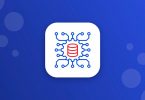Data science is helping researchers unlock why people like a certain genre of music and how they identify the voices of specific persons. Why is it that a song that was written in English such as the Beatles’ hit, “Yesterday” is so well-loved and appreciated all over the world even in non-English speaking countries?

Is it the tempo or rhythm?
Does the melody make it special? In another example, why does a baby recognize and respond to the voice of a parent and does not do the same to a stranger?
Much like exploring each black and white key in children’s piano lessons, scientists are looking at ways to measure each note or sound frequency when playing music.
They are developing music recognition computers that can listen to, detect, and classify music genres and performers merely by decoding the frequencies and data within a song or musical score. These kinds of computers are also being utilized to graphically determine why and how people appreciate harmonics in music.
Indeed, the use of advanced analytics and data engineering in music is akin to unlocking DNA sequences in a genetic laboratory.
This technology has a variety of uses or applications. From the music industry to security systems, the use of audio data is becoming more mainstream.
Protecting Music License Rights and Royalties
Music Recognition Technology or MRT is very crucial in the music industry. At present, it is one of the most reliable means to monitor the usage of copyrighted material anywhere in the world. Simply put, it helps singers and composers get paid more royalties for the use of their music.
In the past, it was very difficult or almost next to impossible to know if a certain audio track is being used commercially across the globe. Today, music is already digital and that makes MRT so vital in maintaining the integrity and profitability of music licensing.
As a tool for copyright protection, it is one of the most effective technological innovations to be made available to the music industry. Its function called fingerprinting allows music publishers to have a database of sample segments of a song or scoring which can be used for database searches and audio file analysis.
One good example of this technology’s potential use and effectiveness is in legal disputes on music copyright. It may be recalled that the song “Blurred Lines” by singer Robin Thicke and Pharell Williams was accused of being a copy of a Marvin Gaye song.
After an extensive court battle, Marvin Gaye’s family was favored by the court and awarded $5 Million plus a 50% stake in all royalties from the song Blurred Lines. In the future, experts can be called to the witness stand and present analytics of two songs or musical compositions to show the digital signatures where replications were made.
Data Science as Tool for Enhancement of Musical Performance
Data science and engineering is now also a mainstream tool in music studios to detect voice range, tuning of musical instruments, and errors in musical performance.
Due to its sensitivity and precision, it can easily project onto graphs all the variations of tone that were recorded into a system. Whether as an audio recording or a live voice or musical instrument, it can help in the calibration of pitch, sound texture, and volume with the intention of perfecting a musical performance.
One such gadget is called an “auto-tune” and is used by top performers like Justin Bieber and Kanye West. They use such gadgets not because they are tone deaf but more for vocal effects or so-called distortions; and to preserve their voice, especially during a tour. Using auto-tune allows them not to over-use their vocal cords, or more commonly referred to as vocal fatigue.
Voice Security System
There are other applications of recognition technology outside the music industry. Anotherbranch of application that is related to MRT is the Biometric Voice Recognition or BVR.
In this technology, the voice of the administrator is recorded and set as an administrator for a certain database, software, or network. It is a way for authenticating the identity and authorization of a user who is trying to log-in and enter a certain system.
In the past, authentication was mainly text-based, that is, through the registration of a user name and password that is typed onto fields to gain entry. Nowadays, there are homes that have doors that have voice-activated locks.
In some smart homes, voice recognition is also used to control lights, switches, various types of appliances, and all other items that can be linked to a network with audio control programs.
Related to security systems are portable voice recognition gadgets that are used by security guards in high-tech facilities. These gadgets enable the head office or security officer to monitor the security personnel as they do patrols around the facilities where they are assigned.
These systems, however, are still prone to error that is why early models of the BVR are being upgraded using the finer, more detailed analytics of music recognition technology which detects a wider band of frequencies or motifs (i.e. short musical phrases).
Even with all these applications, many scientists and research laboratories are still hard at work at unlocking the many mysteries of sound and music. When babies develop auditory senses by hearing the vibrations of their mother from inside the womb, it involves a lot of coding in the unborn child’s brain.
There are still aspects of this that remain unexplained to this day. As technology progresses, perhaps more applications will be developed to make sounds fully functional in almost all aspects of human life.




Leave a Comment